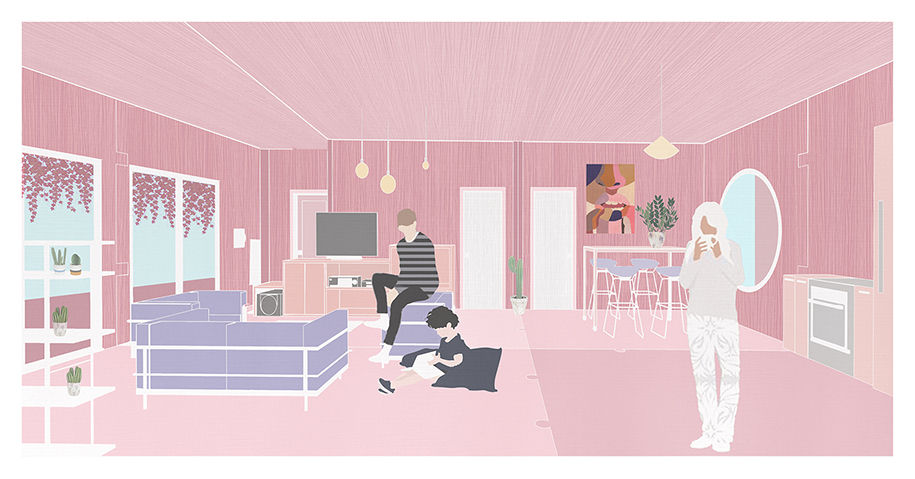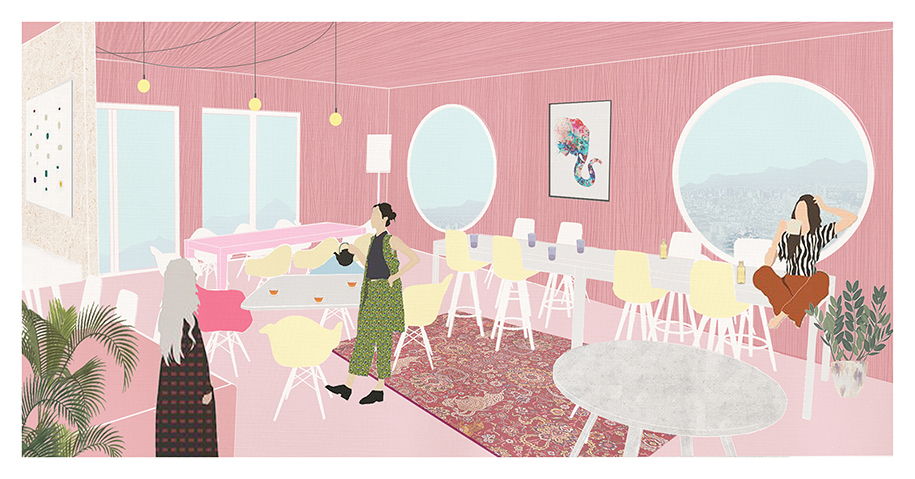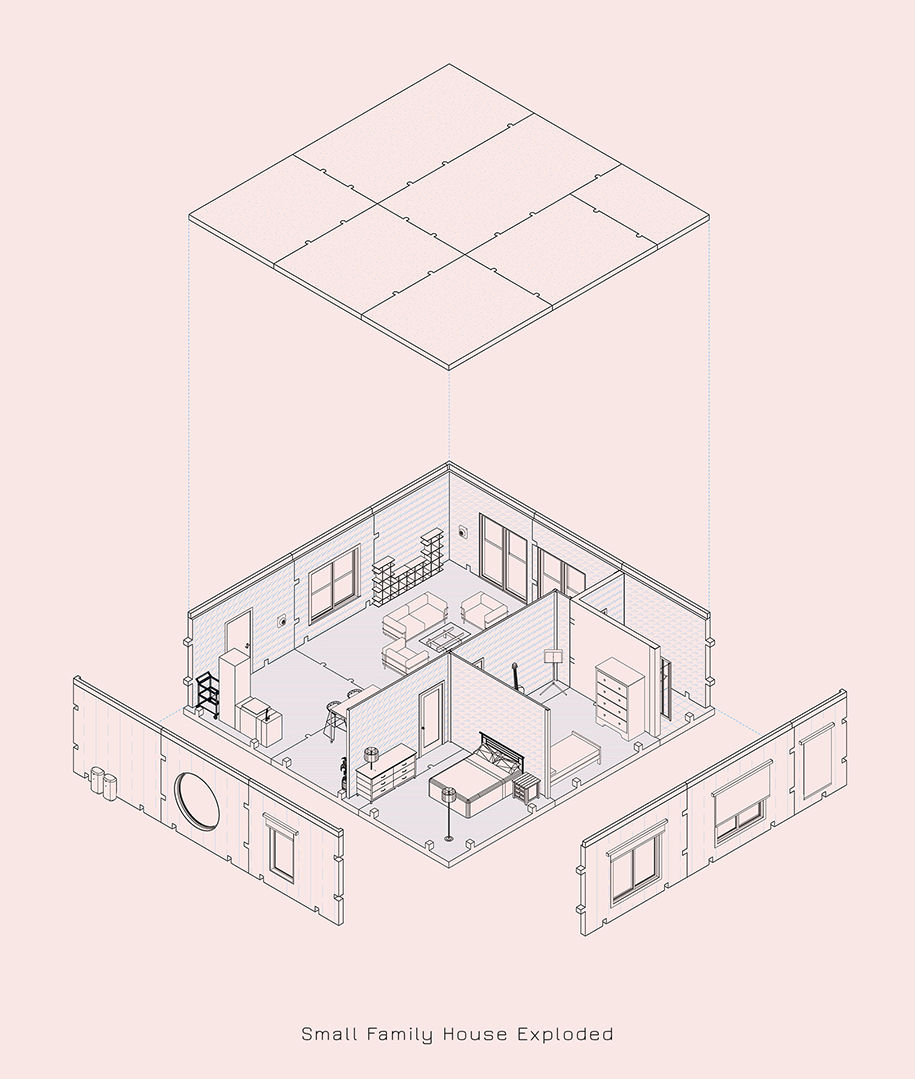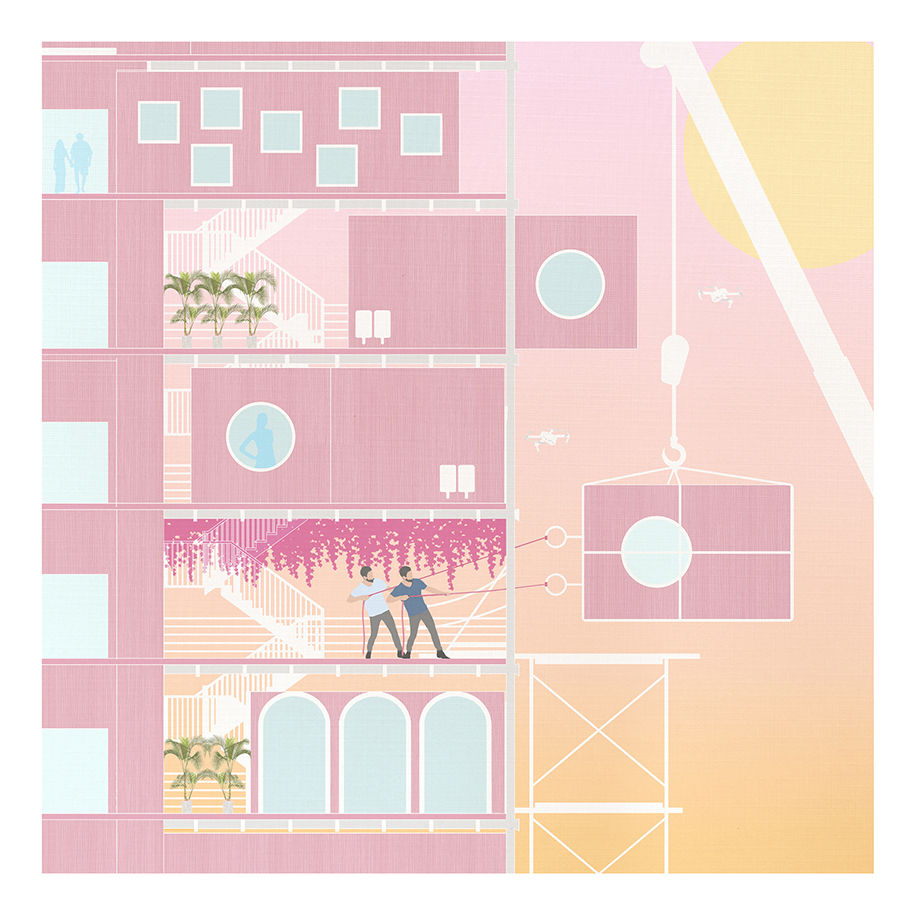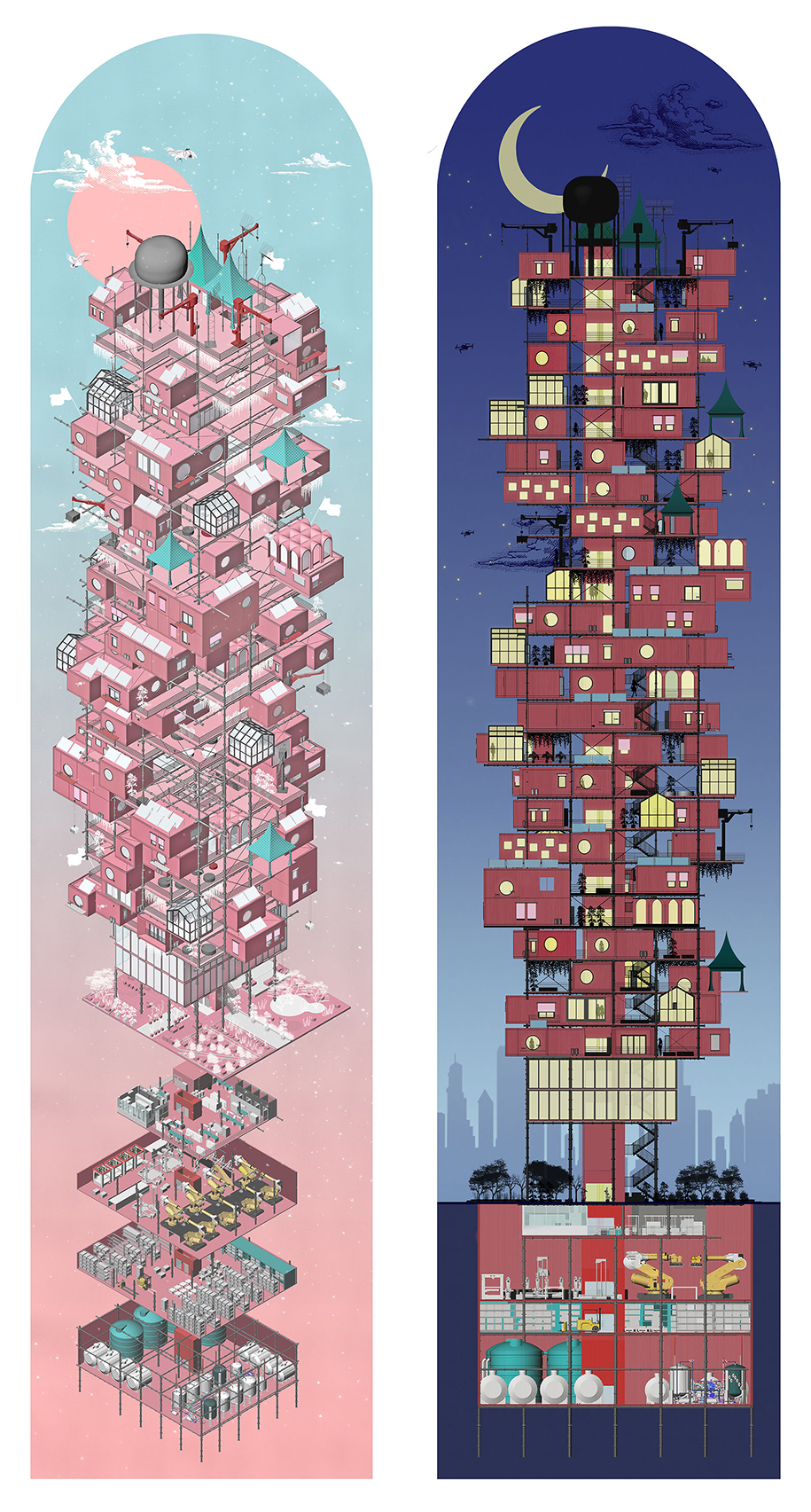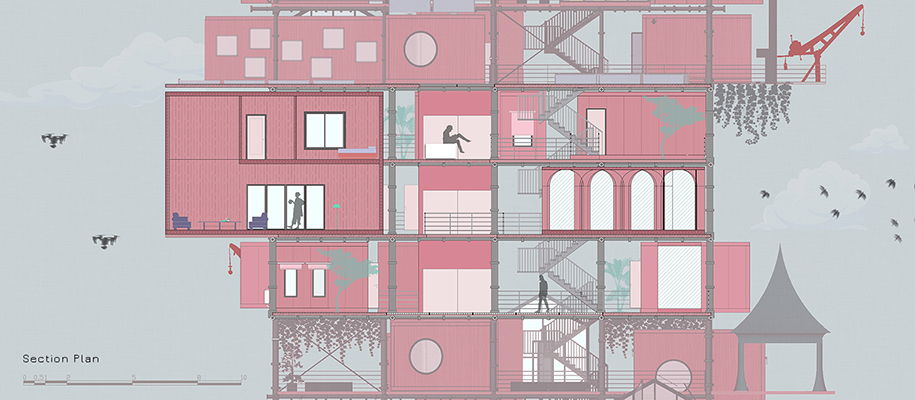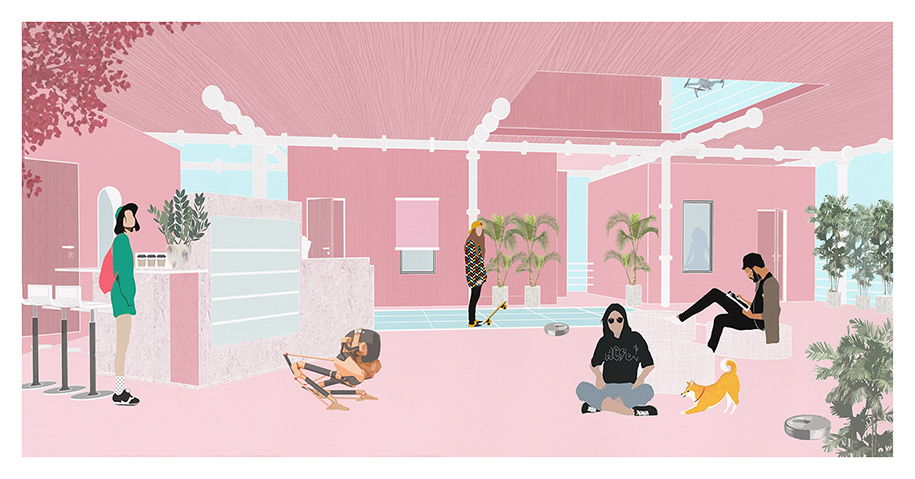The Housing and Automated Production Infrastructure is a project that envisions future cities housing vertical development, that blends with other public uses and is based on fabrication and maintenance technologies, all for the sake of sustainability and affordability.
The project Hapi attempts to create a narrative about co-housing in future mega cities. The lack of housing in urban centers and the need for sustainable, affordable and adaptable residence were the main issues we attempted to deal with.
The Hapi megastructure is placed in different spots in the future city, constructed as a combination of 3d printed frames and pre-constructed houses. The frame consists of 3d printed components that are assembled in situ and then the houses are lifted and placed to each floor.
Each residence is based on an algorithmic process and categorized according to the scale of the family that it can accommodate. There are options for co-housing types of living, connecting separate houses or extending them. There are smart sensors and house robots installed in every house helping with the monitoring of house conditions and energy saving.
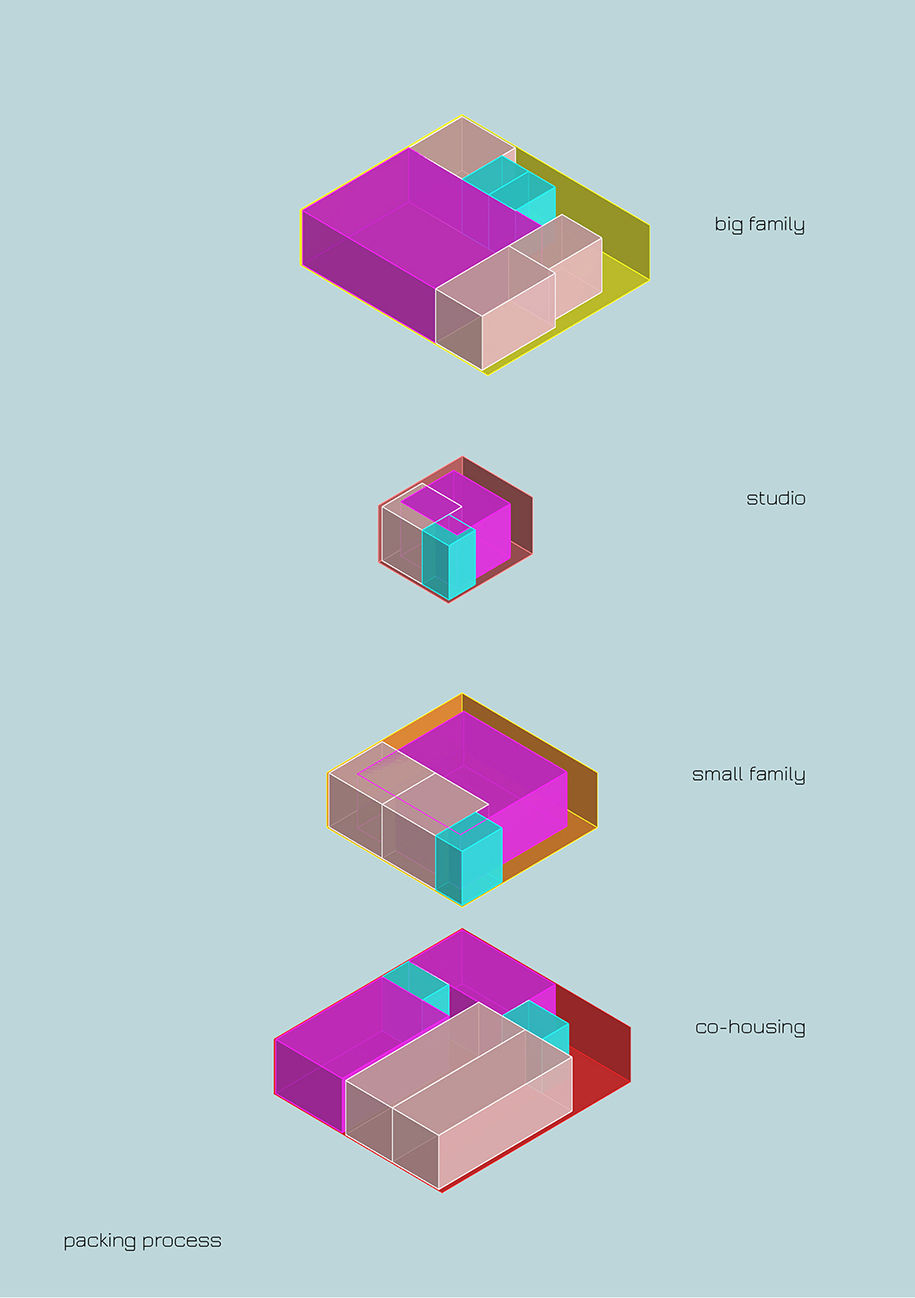
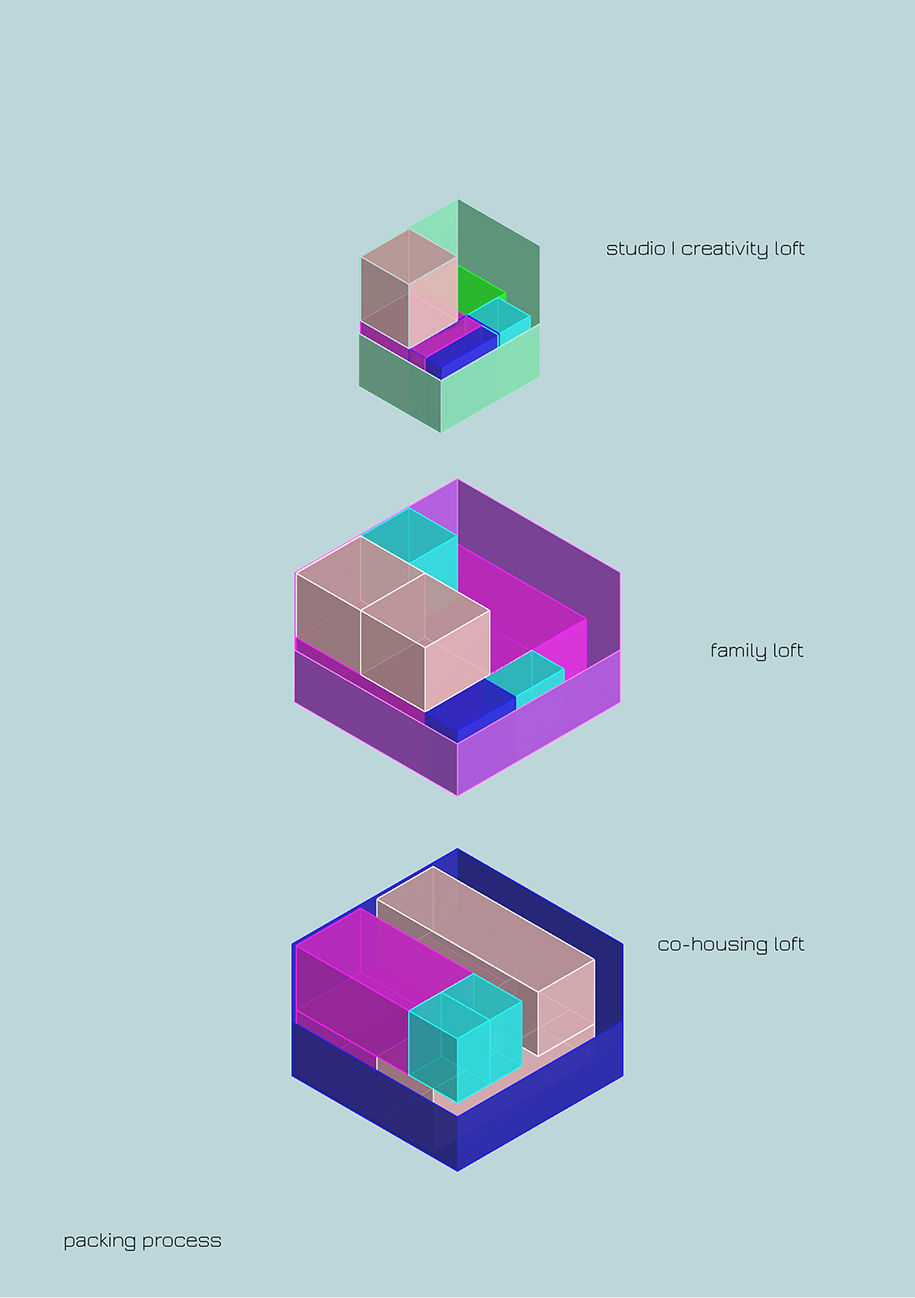
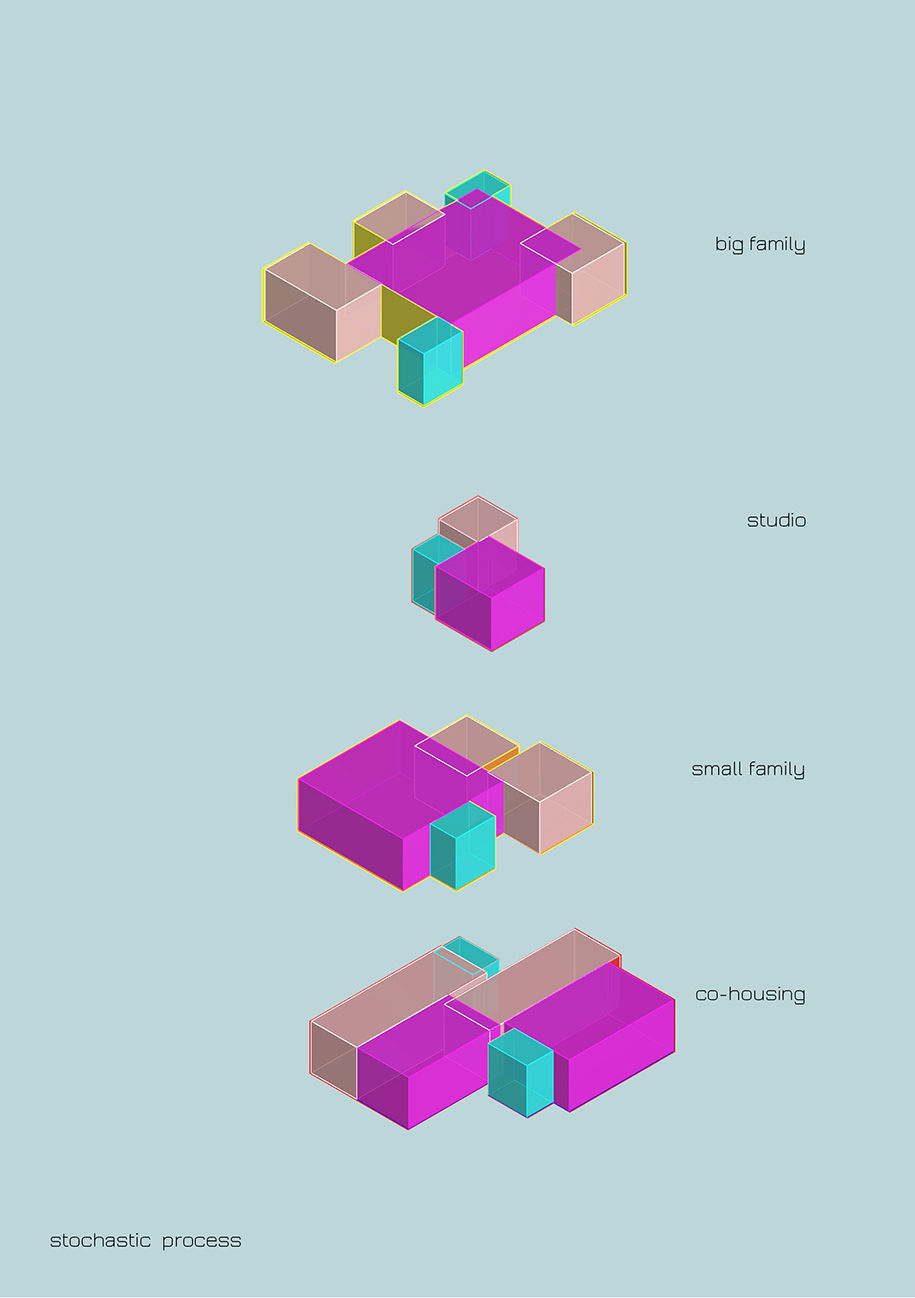
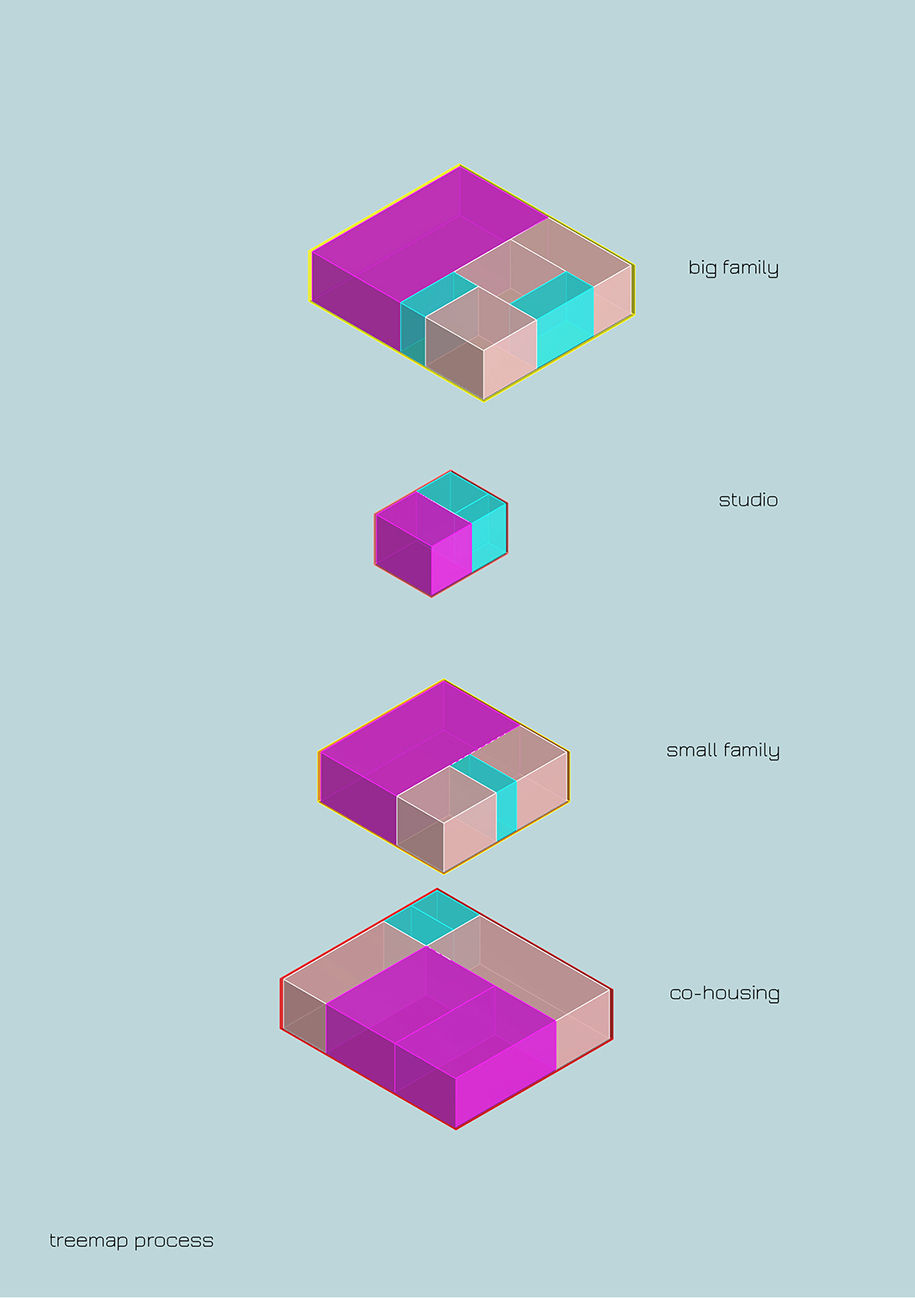
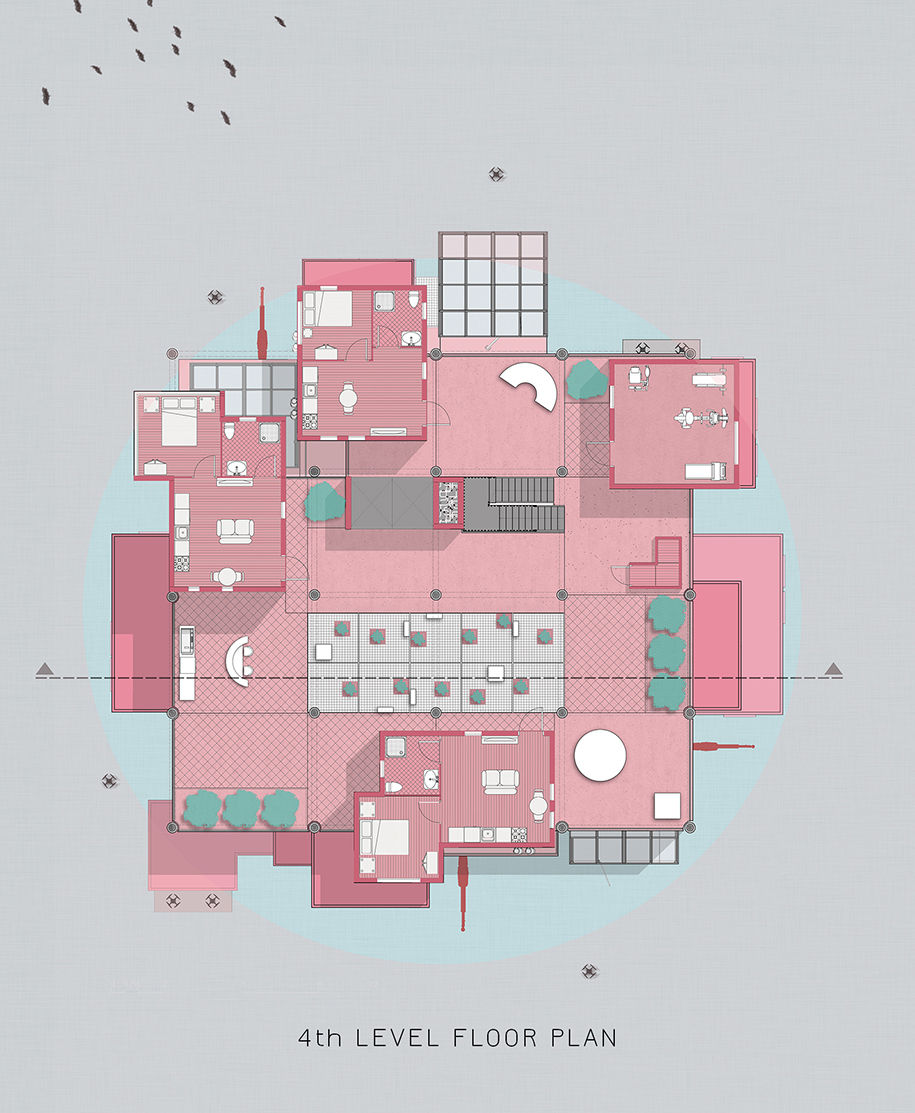
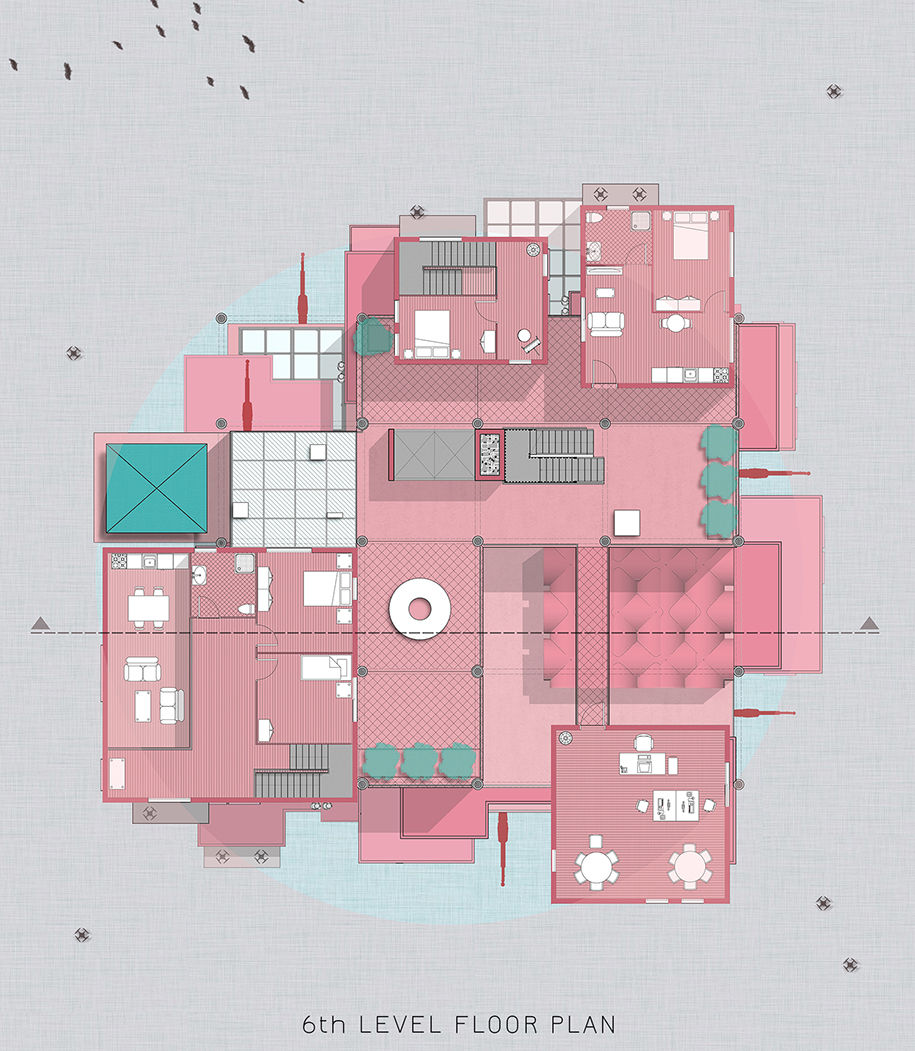
On the upper level of the megastructure we place other uses apart from housing. Those are marketplace, cinema, coffee shop, co working space, education space, athletic space etc. The main idea is that mixed uses will encourage the residences to move vertically, visit other floors and as a result meet each other and create relationships.
The underground level of the megastructure works fully automated as a lights out factory that recycles household waste in order to produce bioplastic. The bioplastic is used to 3d print house equipment that is distributed in the furniture shop placed on the first two floors on the megastructure.
The integration of housing, other uses and an automated factory creates an autonomous, sustainable system that could be a new life model in future mega cities.
The construction operates assisted by a phone application that gives possible residents the opportunity to make design decisions, chose their future house and house equipment and order them through the application. The use of an application as well as the given lists of houses and equipment attempts to decrease the time needed for a house to be built. It also decreases the expenses for the construction.
The aim of the project is to reimagine human life in the future as it is depicted in urban housing. We imagined humans assisted by new technologies, being able to decide about their houses, socializing with each other despite living in high rises and densities. All these concepts were expressed in a post digital aesthetic with many references in traditional Japanese art. We used familiar elements as well as atypical ones to create both the sense of familiarity and prosperity for the future.
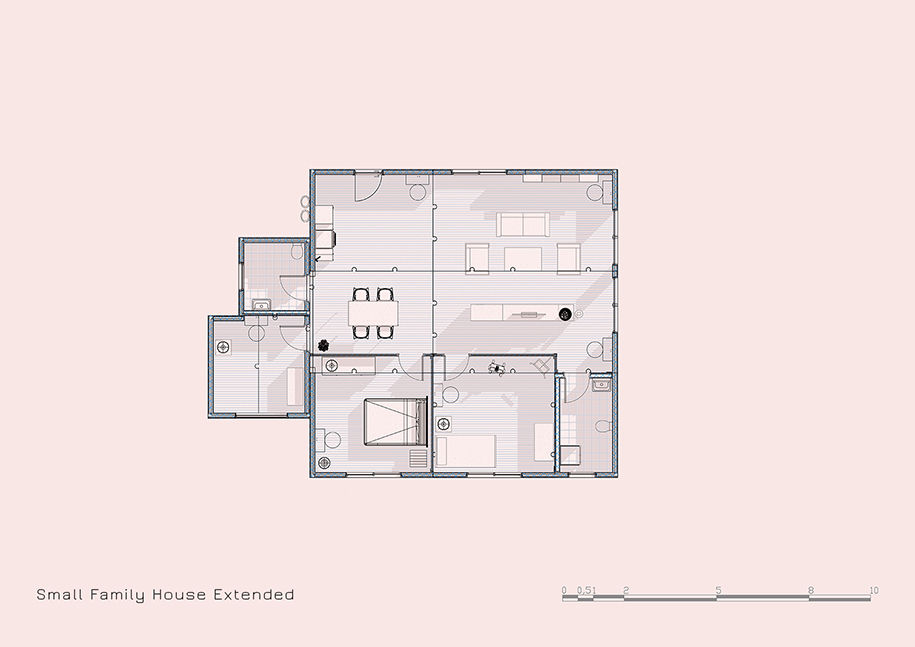
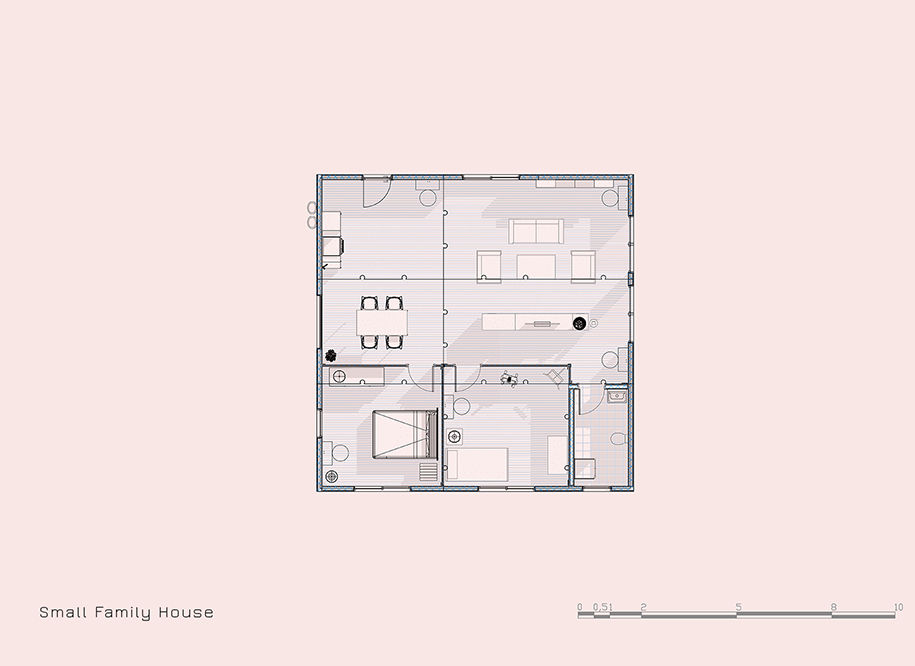
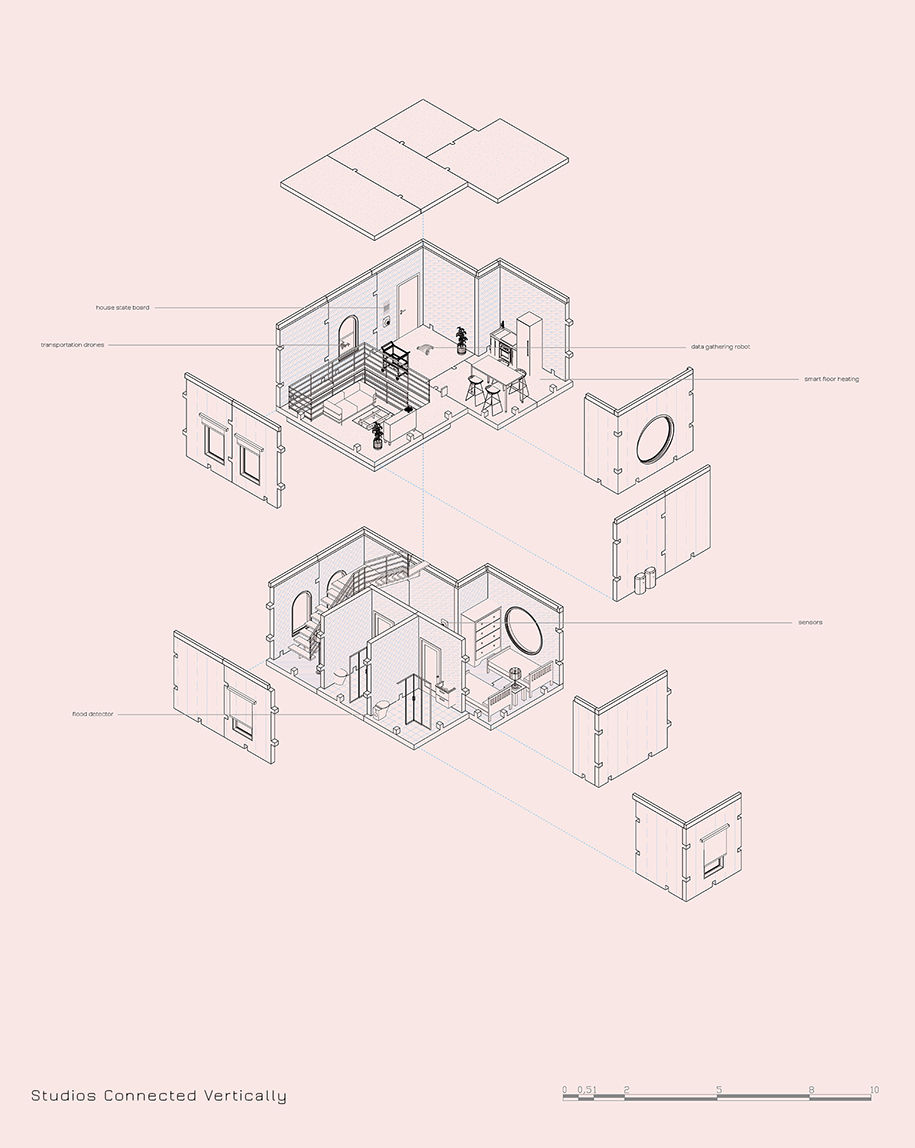
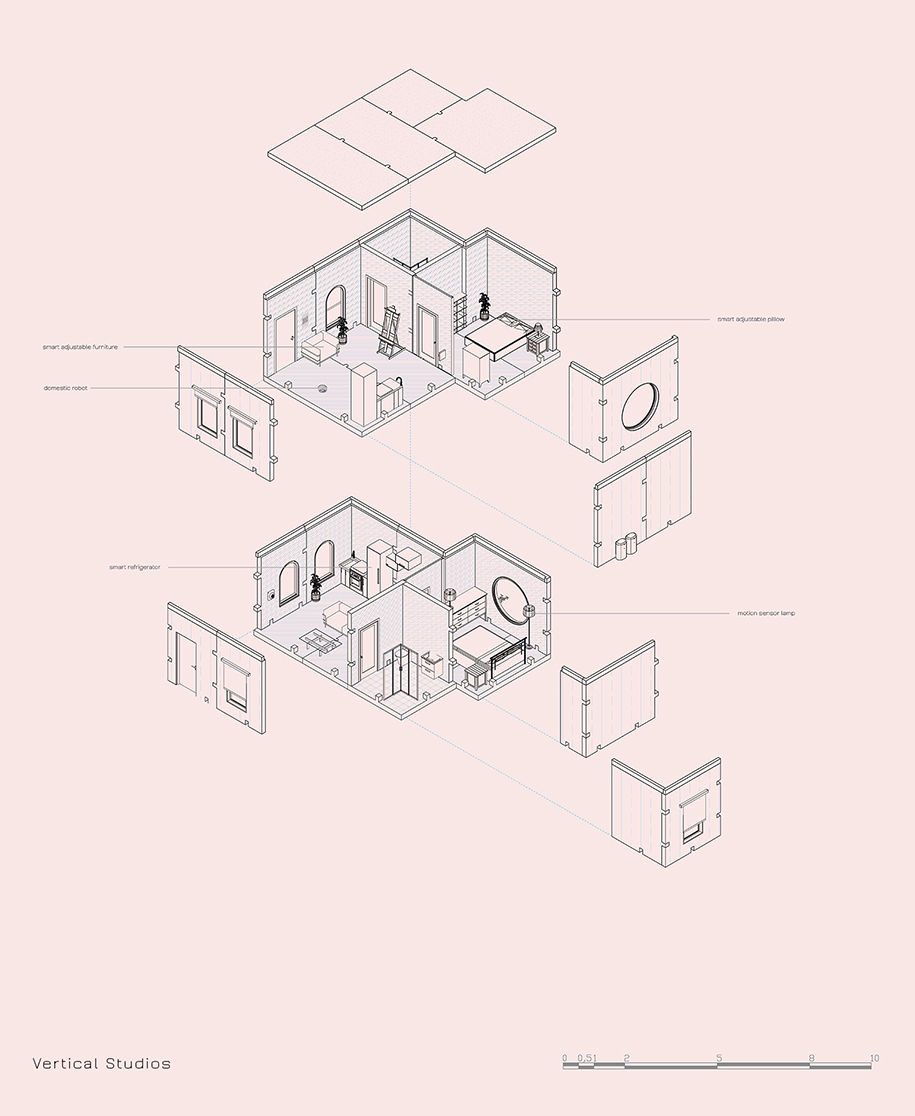
Facts and Credits
Project title Hapi (Housing & Automated Production Infrastructure)
Original title Αυτόνομη μονάδα κατοίκησης και παραγωγής
Students Georgia Strinopoulou, Eleni Chasioti
Date winter semester of the academic year 2018-2019
School Aristotle University of Thessaloniki Faculty of Engineering, School of Architecture
Supervisor Stavros Vergopoulos
See Also: School of architecture in the city of Ioannina , by Konstantina Theodorou here!
READ ALSO: Land reclamation at Mesolongi lagoon Bathing facilities | Thesis Project by Kalogeri Maria , Kalimeri Vivia, Κοtsailidi Eva
